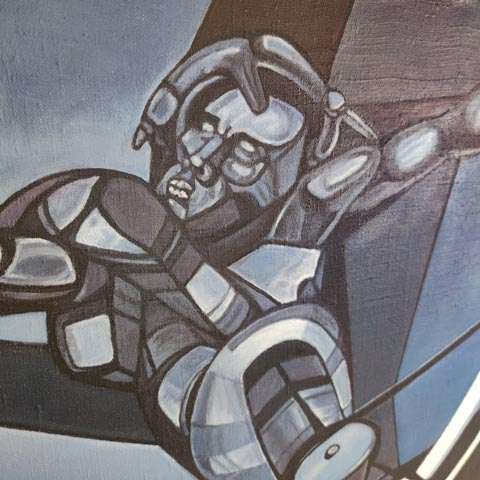
“There is an angel and a devil in you. We like the angel, but we will erase the devil out of you”, Nikita Khrushchev, first secretary of the CPSU Central Committee, tried to teach him. Khrushchev himself had no idea that in less than two years his “comrades-in-arms” surrounding him would remove him from power and give up with great difficulty the organization of the staged murder. And in another 13 years, his “ideological enemy” Ernst Neizvestny, who was standing in front of him, would build and erect a tombstone for him. He would erect it in time for his emigration.
The human memory is strangely constructed. Whenever we talk about Ernst Neizvestny (1925–2016), the first thing that is usually remembered is not one of the world's tallest sculptures, the “Lotus Flower” at the Aswan Dam, 75 meters high. And not the piercing “Mask of Sorrow” in Magadan. But the outrageous episode at the Manezh exhibition in 1962, where Khrushchev, twisted by his comrades-in-arms, attacked modern artists incomprehensible to him. Remember his «As for art, I'm a Stalinist»? Vladimir Yankilevsky, a participant of those events, said that everyone was taken aback at that moment. And Neizvestny was probably the only one who didn't lose his temper. On the contrary. He stood up for the artists and confidently confronted Khrushchev and ex-Security Minister Shelepin. To Shelepin he said: “You don't scare us”. And he told Khrushchev's entourage to keep quiet while the artist explained the idea.
A hero? A reckless daredevil? A darling of fortune who got away with many things?
It was more like all together. He went to the front as a volunteer. Lieutenant Ernst Neizvestny's parents twice received a death notice. His wounds were so severe that the soldier was listed among the dead as hopeless. But he survived. And he lived to the age of 91. It was Yevtushenko who wrote the poem “Lieutenant Neizvestny Ernst” about him: “When fops and quiet ones squeak that you're weak in a party, I feel the monument crawling inside you”. Neizvestny returned from the war as a knight of the Order of the Red Star on his chest. Next came the Surikov Institute and Philology Department at Moscow State University. Neizvestny was lucky to quickly find his place in civilian life. Or rather, not to find, but to win it back. His modernist philosophy of sculpture was completely rejected by academicians and the heads of the Soviet “sculpture mafia”. They would not let him in, forbade him, put sticks in his wheels. They knew Neizvestny needed space and scale. That meant he needed money, materials and helpers. They wouldn't let him get away with it. The sculptor collected bronze faucet and scrap metal and melted it down in his workshop. All in spite of. After the scandal at Manezh-62 he was not allowed to make projects under his own name for almost 10 years. Sometimes it was possible to outwit the enemies. Examples include the monument “Friendship of the Children of the World” in “Artek” (1967) and “Lotus Flower” at the Aswan Dam in Egypt (1971). But the rest was a grueling and exhausting struggle with the system.
At the age of 50, the sculptor's patience ran out. It became clear that he would spend the second half of his life in pointless and humiliating arguments. In 1976, after three years of rejection, he went into exile. He worked in Europe, then went to the United States. There, in the suburbs of New York, he set up a studio. At that time, it was believed that the USSR was forever. But it turned out that it was only for 15 years. Then Ernst came to Russia. He was solemnly received in his homeland. And in the new Russia they finally erected his monuments, which had been conceived back in the workshop in Sretenka.
Ernst Neizvestny's modernist works are very recognizable stylistically and interesting for philosophical deconstruction. His paintings are populated by powerful centaurs, half-robots, symbolizing the mixing of humanity and technical progress. And also distorted face-masks, Prometheus, Icarus and the humanistic “tree of life” are the pinnacle of his philosophical quest. His art is emotional, powerful, expressive. Believe me: once seen, Neizvestny's images and plots won't go out of your head for long.
The peak auction prices for Neizvestny were naturally recorded in the “rich” years of 2007–2008. The price record of $ 86,000 for a one-and-a-half-meter painting “Heads” was set at Christie's in 2007. Comparable results in the $ 40,000 to $ 60,000 range were recorded around the same time. These figures can be kept in mind as examples, but taking them as benchmarks now makes no sense. Alas, the two crises have not gone away. And even those record-breaking “Heads” were resold in Moscow seven years later for half the price.
And now the prices are like this:
- Investment-grade paintings — paintings from the 1970s and 1980s about 70 × 90 — go into the $ 15,000 range and up. But they start at $ 12,000. In the realities of today's market, this makes Neizvestny's paintings accessible to a relatively wide range of collectors. Our advice is to buy.
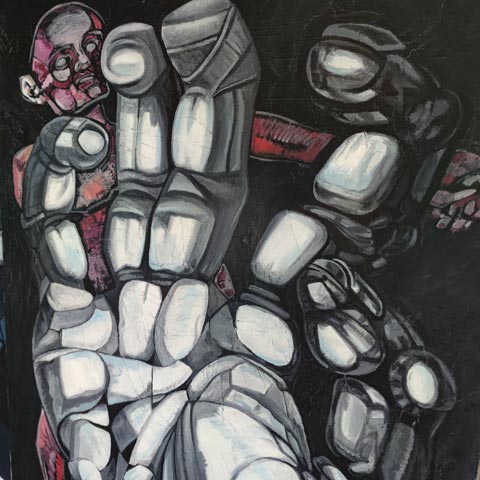

- Bronze sculpture is in strong demand. The variation in price can be very substantial. But as a point of reference: a height of 30–40 cm is from $ 10,000. Small figurines with a height of about 15 cm cost 300,000 rubles or about $ 4,000. Plus or minus. And more likely a plus than a minus. And if you can buy for that kind of money, it bodes well for investment prospects.
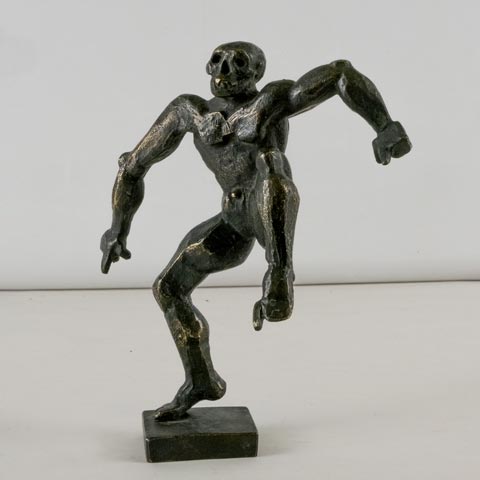
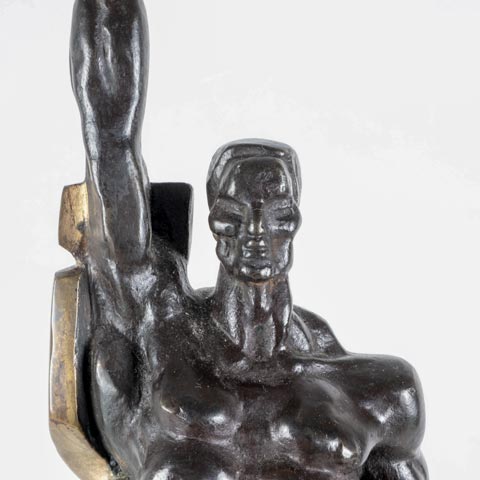
- Neizvestny's drawings can be found on the auction market today for $ 1,500–2,000. Large-scale prints are half the price. Neizvestny's drawings are very powerful and energetic and are a jewel in the collection. It is a strong connoisseurial material. But it should be kept in mind that graphics have less investment potential than painting or sculpture. All other things being equal, drawings will be slower to rise in value.

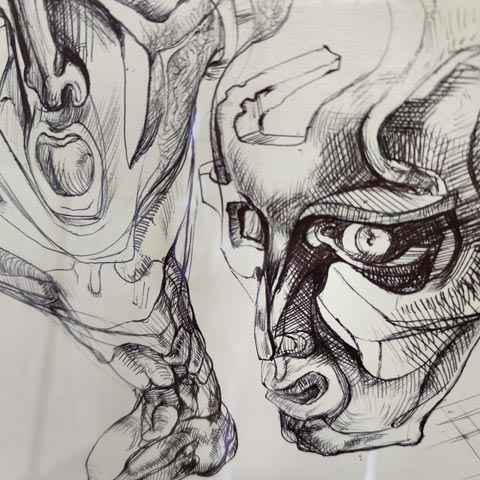
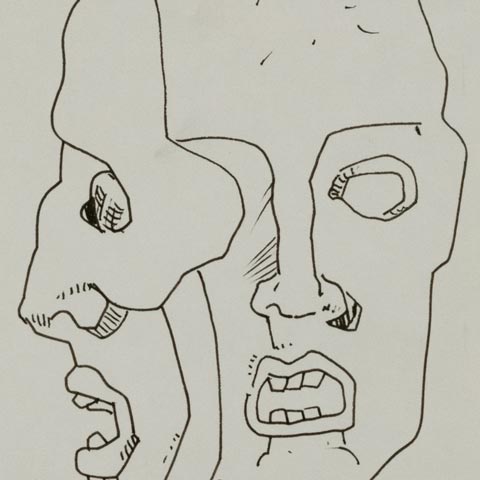
Finally, to the conclusions.
The work of Ernst Neizvestny has significant potential for price growth. The artist is undervalued. The current prices have not yet come in line with his importance in the history of post-war unofficial art. But it won't always be that way. The market of paintings, graphics and sculptures by Ernst Neizvestny, due to historical reasons, is now undergoing a new stage of formation. After a long pause, high quality works are beginning to appear at Russian auctions again. And this is a great opportunity for old and new collectors to strengthen their collections.
Vladimir Bogdanov, specialist of ArtSale.info auction
See also a video review of investments in the works of Ernst Neizvestny on our YouTube channel:
- Log in to post comments










